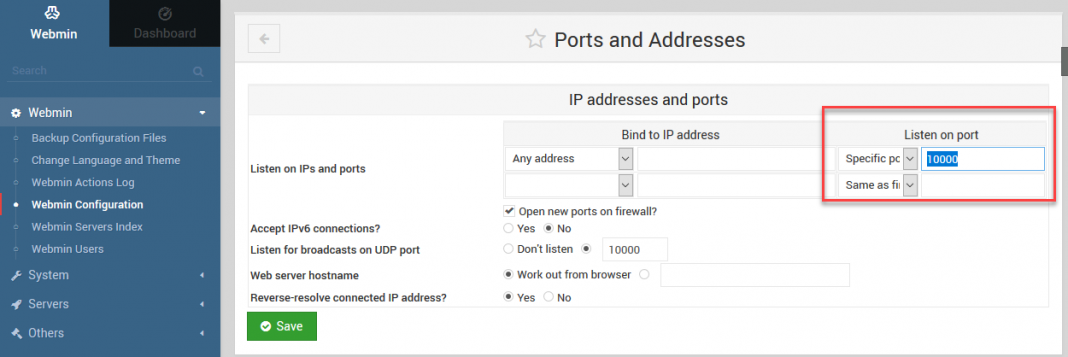

Because port 10000 can be used by servers run by any user, it may be possible for a malicious user on your system to wait for Webmin to be shut down and then start his own fake Webmin server on that part, which could capture the admin or root password. You may need to change the port though, perhaps because a firewall on your network only allows connections to web servers on the standard ports of 80 and 443. Webmin usually listens for connections on port 10000 on all of your system's IP addresses. Hit the Save button to activate the new client address restrictions.The service name to use when editing those files is webmin. To have Webmin check the TCP-wrappers configuration files /etc/hosts.allow and /etc/ny as well when deciding whether to allow a client, turn on the *Also check TCP-wrappers hosts.allow and ny files* option.This can happen on a network using DHCP, or if you are connected to an ISP that dynamically assigns addresses.
#Webmin port update#
This can be useful if the system you are running a browser on is frequently changing IP address, but is able to update a DNS record to match.

To change this check the *Resolve hostnames on every reques*t box, and it will convert hostnames to IP addresses for comparison for every request.


 0 kommentar(er)
0 kommentar(er)
